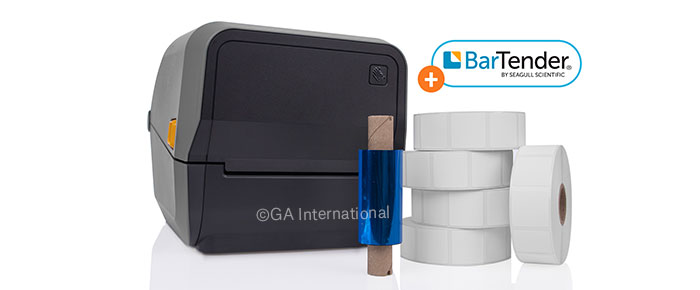 Deciding to implement a new identification system doesn’t have to be complicated; however, getting it right does take a bit of planning and preparation so that human errors can be effectively reduced. This is where optimization can help, from identifying the gaps in item identification to finding solutions that address these gaps while fitting into your current workflow.
Deciding to implement a new identification system doesn’t have to be complicated; however, getting it right does take a bit of planning and preparation so that human errors can be effectively reduced. This is where optimization can help, from identifying the gaps in item identification to finding solutions that address these gaps while fitting into your current workflow.
Construct and personalize the system
The first and most crucial step to optimizing identification occurs during the system’s initial design. Tailoring the solution to your specific business ensures that all possible environments are accounted for. This includes cold storage, high-heat environments, and exposure to harsh chemicals such as organic solvents and alcohols. Choosing the right specialty labels plays a big role in designing the solution, but other components are necessary to consider as well, from the type of printer you use, to label printing software, and barcode/RFID scanners. The key is that no system is ideal for all businesses; each has its own pros and cons, and it’s necessary to determine your own specific needs before committing to any one identification solution.
Test the system
Once the system has been selected, it’s not guaranteed to work as intended. Getting label samples that you can test with the appropriate software and hardware (i.e., scanners) to ensure that the system runs smoothly, accurately, and consistently is an excellent way to troubleshoot. Testing need not be an isolated event; working in conjunction with your label manufacturer and/or supplier ensures that troubleshooting can be performed promptly, allowing you to understand the nature of the error and how to fix it. If a longer-term, more elaborate solution is required, it may require the manufacturer to further customize the solution by recommending different equipment and software or by designing a new unique labeling solution to meet the specific need.
Integrate it into your existing processes
Integrating your new identification solution into your existing workflow is imperative for the proper adoption of the new system. To that end, the identification solution should be fully compatible with your various existing systems, including any existing inventory management software. You must also consider the most seamless way this identification solution can be incorporated into your workflows. It is recommended that any new solution not add time to established procedures or increase workflow complexity. Finally, you must also ensure that the addition of labels or tags does not affect the item itself; for most items, particularly those sold in retail, the label should not leave any residue when removed, regardless of the type of label applied.
Train effectively
Once the system has been chosen and everything is in place to begin, it’s imperative that a brief training program be implemented to introduce all relevant personnel to the new system and to ensure they know how to use it. When designing the program, make sure to tailor it to your company’s specific needs. You can even incorporate typical workflows into the training to show how items should be identified throughout. The session should ideally be clear and concise; if there are any misunderstandings about SOPs, errors are likely to creep in, especially in the short term. It may even be beneficial to prepare a presentation or webinar detailing the new SOPs, so that staff can refer back if they are unsure of specific steps.
Monitor the system over time
It’s not enough merely to train personnel and assume that the system is working correctly. No human is perfect, and errors will likely occur every now and then. The goal is to minimize the rate at which they do happen, so they do not significantly influence workflow. To that end, it’s essential to monitor how well the system performs regularly to gauge whether it works as intended in the long run. Even if the system is running at optimal performance for a decent length of time, changes in the system or the people using it—if new personnel are hired or if distribution and/or manufacturing protocols change, for instance—might result in unexpected increases in the rate of errors. Quickly identifying and adapting to these changes is imperative to keeping productivity high and costs low.

